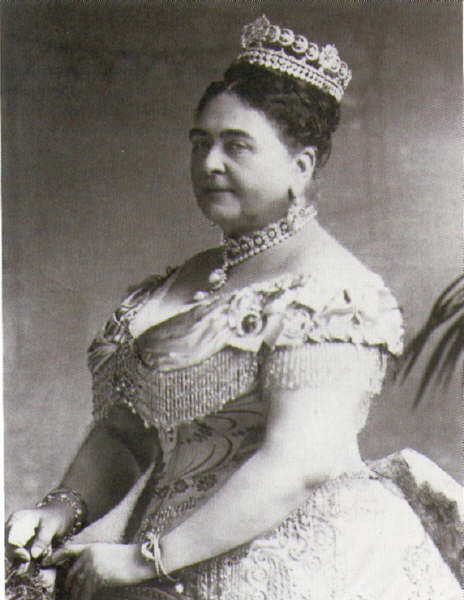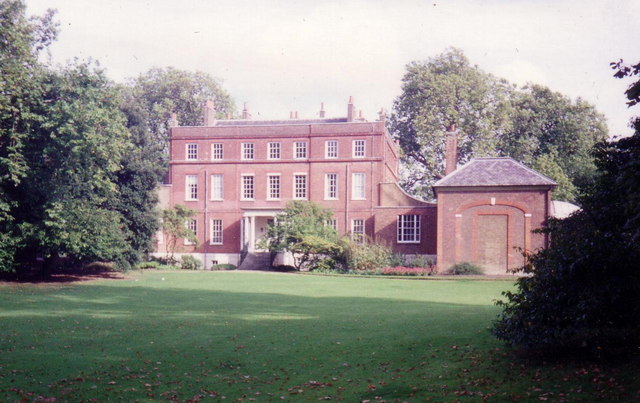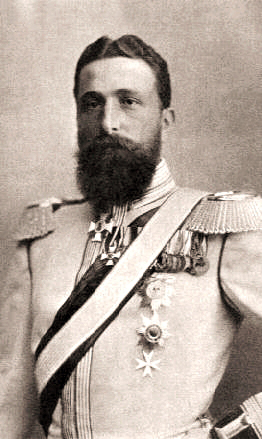© Unofficial Royalty 2024

Prince Maurice of Battenberg; Credit – Wikipedia
October 27, 939 – Death of Æthelstan, King of the English in Gloucester, England; buried at Malmesbury Abbey in Wiltshire, England
Modern historians regard Æthelstan as the first King of England although he used the style King of the English (Rex Anglorum in Latin). He was the eldest son of Edward the Elder, King of the Anglo-Saxons and the only son of Ecgwynn, the first of Edward’s three wives. He was also a grandson of Alfred the Great. Æthelstan died in Gloucester on October 27, 939 at around the age of 45. Because he was never married, Æthelstan was succeeded by his half-brother Edmund I, King of the English.
Unofficial Royalty: Æthelstan, King of the English
October 27, 1327 – Death of Elizabeth de Brugh, Queen of Scots, second wife of Robert I, King of Scots (Robert the Bruce) at Cullen Castle in Banffshire, Scotland; buried at Dunfermline Abbey in Dunfermline, Fife, Scotland
Born in Ireland around 1284, Elizabeth de Burgh was the second wife of Robert I (the Bruce), King of Scots and his only Queen Consort. Robert the Bruce and King Edward I were constantly battling for control of Scotland in the Wars of Scottish Independence. In 1306, Edward I took Elizabeth, Robert’s daughter Marjorie from his first marriage, his sisters Mary and Christina, and Isabella MacDuff, Countess of Buchan as hostages. He held them until 1314. After Elizabeth’s release, she and Robert had four children. After falling from her horse, Elizabeth died, aged about 43-years-old.
Unofficial Royalty: Elizabeth de Brugh, Queen of Scots
October 27, 1401 – Birth of Catherine of Valois, Queen of England, wife of King Henry V of England, at the Hôtel Saint-Pol, a royal palace in Paris, France
Catherine was the daughter of King Charles VI of France. Most notable of Catherine’s siblings is King Charles VII of France, the Dauphin helped by Joan of Arc during the Hundred Years War, and Isabella of Valois, the second wife and widow of King Richard II of England. In 1420, Catherine married King Henry V of England. The following year, Catherine gave birth to their only child, the future King Henry VI of England. In 1422, King Henry V died of dysentery, nine days before his 36th birthday, and his son King Henry VI at the age of nine months started his 40 years on the throne. Catherine was left a widow at the age of 21. With Catherine being a young widow with apparently no chance of remarriage, it should not seem unusual that she began an amorous relationship with Owen ap Maredudd ap Tudor, a Welsh soldier and courtier who served in her household. There is much debate as to whether Catherine and Owen married. No documentation of marriage exists and even if they did marry, their marriage would not have been legal due to the act regarding the remarriage of a queen dowager. Owen and Catherine had at least six children, Through their son Edmund Tudor descended King Henry VII of England and the Tudor Dynasty. Through their great-granddaughter Margaret Tudor descended the British royal family and many other European royal families.
Unofficial Royalty: Catherine of Valois, Queen of England
October 27, 1858 – Birth Prince Valdemar of Denmark, son of King Christian IX of Denmark, at Bernstorff Palace in Gentofte, Denmark
Valdemar was the youngest of the six children of King Christian IX of Denmark and Louise of Hesse-Kassel. He was the brother of King Frederik VIII of Denmark, Queen Alexandra of the United Kingdom, King George I of Greece, and Empress Maria Feodorovna of Russia. In 1885, Valdemar married Princess Marie of Orléans. Valdemar and Marie had four sons and one daughter. Three of their sons made unequal marriages and relinquished their position within the Danish Royal Family upon marrying without official consent from the monarch. Valdemar had a lifelong naval career which frequently caused him to be away from home.
Unofficial Royalty: Prince Valdemar of Denmark
October 27, 1868 – Death of Harriet Sutherland-Leveson-Gower, Duchess of Sutherland, Queen Victoria’s Mistress of the Robes 1837–1841, 1846–1852, 1853–1858, and 1859–1861, at Stafford House in London, England; buried in the Sutherland Mausoleum in Trentham, Stoke-on-Trent, England
Born The Honourable Harriet Elisabeth Georgiana Howard, daughter of George Howard, 6th Earl of Carlisle, Harriet did not have an affair with Ernst II, Duke of Saxe-Coburg and Gotha as depicted in the television series Victoria. The real Harriet was twelve years older than Ernst and her husband George Sutherland-Leveson-Gower, 2nd Duke of Sutherland did not die until 1861. Harriet and her husband had a successful, loving marriage and had eleven children.
Unofficial Royalty: Harriet Sutherland-Leveson-Gower, Duchess of Sutherland
October 27, 1888 – Death of Helena of Nassau, Princess of Waldeck and Pyrmont, first wife of Georg Viktor, Prince of Waldeck and Pyrmont, in Pyrmont, Principality of Waldeck and Pyrmont, now in Hesse, Germany; buried at the Princely Crypt in Rhoden, now in Saxony-Anhalt, Germany
In 1853, Helena married Georg Viktor, Prince of Waldeck and Pyrmont. The couple had six daughters and one son. Because of her efforts, the relatively poor House of Waldeck-Pyrmont was linked by the marriages of their children to the richer ruling dynasties of Würtemberg, the Netherlands, and the United Kingdom. Georg Viktor and Helena are the ancestors of the Dutch royal family through their daughter Emma and the Swedish royal family through their daughter Helena. Their daughter Helena of Waldeck-Pyrmont married the youngest son of Queen Victoria, Prince Leopold, Duke of Albany.
Unofficial Royalty: Helena of Nassau, Princess of Waldeck and Pyrmont
October 27, 1914 – Death of Prince Maurice of Battenberg, grandson of Queen Victoria, killed in action during World War I at Zonnebeke, Ypres, Belgium; buried at the Ypres Town Commonwealth War Graves Commission Cemetery in Ypres, Belgium
Maurice was the youngest of the four children of Princess Beatrice of the United Kingdom and Prince Henry of Battenberg. On October 27, 1914, Maurice was leading an attack on the German frontline at Zonnebeke near Ypres in the Belgian province of West Flanders when he was mortally wounded by shrapnel. The platoon sergeant tried to offer help to the wounded prince, but Maurice, aged 23, died before his men could bring him to a safer place. Upon hearing the news, King George V, Maurice’s first cousin, and his wife Queen Mary drove to Kensington Palace to console Princess Beatrice. Lord Kitchener, the Secretary of State for War, offered to bring Maurice’s body back to England, but Princess Beatrice replied, “No, let him lie with his comrades.” Maurice was buried in the Ypres Town Commonwealth War Graves Commission Cemetery in Ypres, Belgium.
Unofficial Royalty: Prince Maurice of Battenberg
October 27, 1963 – Death of Berthold, Margrave of Baden, Head of the House of Zähringen and Pretender to the former Grand Ducal throne of Baden from 1929 until his death, in Spaichingen, Germany; buried in the Mimmenhausen Cemetery in Salem, Germany
Unofficial Royalty: Berthold, Margrave of Baden
October 27, 2016 – Death of Prince Mikasa of Japan, son of Emperor Taishō and brother of Emperor Shōwa, at St. Luke’s International Hospital in Tokyo, Japan; buried at the Toshimagaoka Imperial Cemetery in Tokyo
In 1941, Prince Mikasa married Yuriko Takagi, daughter of Japanese noble Viscount Masanari, who was known as Princess Mikasa after her marriage. The couple had three sons and two daughters. All three sons predeceased their parents. Prince Mikasa died of heart failure on October 27, 2016, at the age of 100, a little more than a month before his 101st birthday. At the time of his death, he was the world’s oldest royal, the longest-lived member of the Japanese Imperial Family, and the last of the five Japanese princes in the line of succession. (Today, there are only three princes in the line of succession. See The Japanese Succession Crisis) Prince Mikasa lived during the reigns of three emperors: his father Emperor Taishō, his brother Emperor Hirohito, and his nephew Emperor Akihito.
Unofficial Royalty: Prince Mikasa of Japan
This article is the intellectual property of Unofficial Royalty and is NOT TO BE COPIED, EDITED, OR POSTED IN ANY FORM ON ANOTHER WEBSITE under any circumstances. It is permissible to use a link that directs to Unofficial Royalty.























